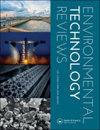Artificial intelligence as an upcoming technology in wastewater treatment: a comprehensive review
Q1 Environmental Science
引用次数: 30
Abstract
ABSTRACT Artificial intelligence (AI) is nowadays an upcoming technology. It is a practice of simulating human intelligence for varied applications. When compared with the standard practices, AI is developing at a rapid rate. AI has proved its worth in several areas such as agriculture, automobile industry, banking and finance, space exploration, artificial creativity, etc. Owing to the efficiency, speed, and independence from human operations, AI is now entering the wastewater treatment sector. This technology has been used for monitoring the performance of the water treatment plants in terms of efficiency parameters, Biological Oxygen Demand (BOD) and Chemical Oxygen Demand (COD) determination, elimination of nitrogen and sulphur, prediction of turbidity and hardness, uptake of contaminants, etc., in the wastewater sector. Artificial Neural Networks (ANN), Fuzzy Logic Algorithms (FL), and Genetic Algorithms (GA) are the basic three models under AI predominantly used in the wastewater sector. Studies reveal that the determination coefficient values of 0.99 can be attained for COD, BOD, heavy metals and organics removal using ANN and hybrid intelligent systems. This review paper describes research with all the possible models of AI utilized in the water treatment which have enhanced the pollutant removal percentage accuracy of ranging from 84% to 90% and provided viewpoint on future directions of novel research, in the field with due focus on pollution remediation, cost effectiveness, energy economy, and water management. GRAPHICAL ABSTRACT人工智能作为一种即将出现的废水处理技术:综述
摘要人工智能(AI)是当今一项新兴技术。这是一种模拟人类智能以用于各种应用的实践。与标准实践相比,人工智能发展速度很快。人工智能已经在农业、汽车工业、银行和金融、太空探索、人工创意等领域证明了它的价值。由于其效率、速度和独立于人类操作,人工智能现在正进入废水处理领域。该技术已用于监测水处理厂在废水部门的效率参数、生物需氧量(BOD)和化学需氧量(COD)测定、氮和硫的去除、浊度和硬度的预测、污染物的吸收等方面的性能。人工神经网络(ANN)、模糊逻辑算法(FL)和遗传算法(GA)是人工智能下主要用于废水处理领域的三个基本模型。研究表明,采用人工神经网络和混合智能系统对COD、BOD、重金属和有机物的去除可以达到0.99的测定系数。这篇综述文章描述了在水处理中使用的所有可能的人工智能模型的研究,这些模型将污染物去除率的准确率提高了84%至90%,并为该领域的新研究方向提供了观点,重点是污染修复、成本效益、能源经济和水管理。图形摘要
本文章由计算机程序翻译,如有差异,请以英文原文为准。
求助全文
约1分钟内获得全文
求助全文
来源期刊

Environmental Technology Reviews
Environmental Science-Water Science and Technology
CiteScore
6.90
自引率
0.00%
发文量
8
 求助内容:
求助内容: 应助结果提醒方式:
应助结果提醒方式:


